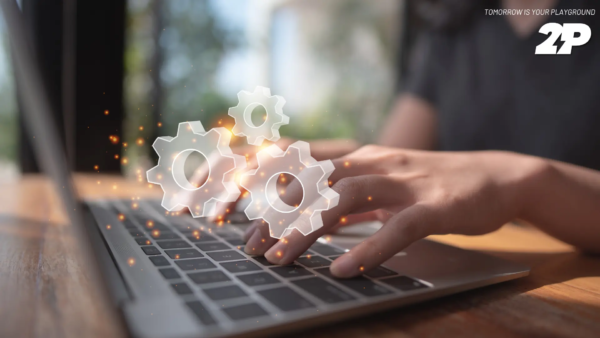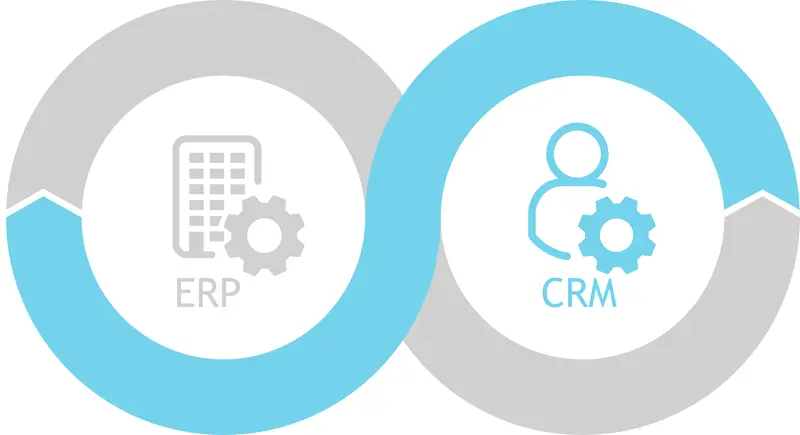
CRM and ERP: what are the differences?

In a context where companies must reconcile sales development and operational efficiency, two types of software are essential:
- CRM: Customer Relationship Management
- ERP: Enterprise Resource Planning
Although they are often confused, these two software packages play very distinct roles. CRM focuses on customer relationship management, while ERP manages the company’s internal processes. So how do you tell them apart? And above all, should you choose between the two or combine them?
CRM: serving customer relations
CRM is much more than a simple directory of contacts: it’s a real strategic lever for improving the customer experience. It centralizes all information relating to prospects and customers, enabling a more personalized approach, better follow-up of sales opportunities and lasting customer loyalty.
What is a CRM used for?
Mainly used by sales, marketing and customer support teams, CRM (customer relationship management) is software that helps companies manage their interactions with customers and prospects. CRM is used at every stage of the customer journey, from prospecting to after-sales service.
CRM is used by any company wishing to build customer loyalty and develop its business.
Salesforcethe world leader in CRM, is used by thousands of companies worldwide.
To find out more, see our article “What is a CRM?”
Key CRM functions
- Customer data centralization
No more scattered Excel files and countless databases: all information is gathered in one place (contact details, preferences, purchase history, interactions, etc.). - Track sales opportunities
Visualize your sales pipeline in real time and follow each prospect step by step, from first contact to contract conclusion. - Targeted, automated marketing
Create personalized campaigns, tailored to each customer segment, and automate their delivery according to precise triggers. - Responsive customer support
Instantly access a customer’s history, manage open tickets and track ongoing requests… for fast, efficient resolution. - Performance analysis
Intuitive dashboards let you measure the effectiveness of your sales and marketing actions, so you can make more informed decisions.
CRM enables us toanticipate customer needs,accelerate sales cycles andsignificantly improve the customer experience.
ERP: the backbone of internal organization
ERP, on the other hand, focuses on internal company management. It integrates all key processes (finance, logistics, production, HR, etc.) into a centralized system, for a unified, up-to-date vision of the organization.
What's the point of ERP?
Used by accounting, finance, HR and operational functions,ERP (Enterprise Resource Planning ) is software that manages and centralizes all a company’s operational processes within a single, integrated system.
It automates day-to-day tasks, centralizes and streamlines the flow of information, improves productivity and supports decision-making.
Some ERPs also include modules to help comply with tax, social security and accounting legislation.
ERP is used by SMEs and large corporations alike, in almost every sector of activity (industry, commerce, service, etc.).
Key ERP functions
- Accounting and financial management
Automate entries, manage bank reconciliations, track budgets and produce balance sheets with ease. - Purchasing and sales
From order to invoice, everything is tracked and centralized to facilitate exchanges with suppliers and customers. - Logistics and inventory management
Keep track of your stocks in real time, manage supplies and optimize your inventories. - Production
Plan production, monitor stages and ensure quality control to meet deadlines and standards. - Human resources
Simplify the management of time, leave and pay slips, and centralize all HR data. - Steering and reporting
Clear indicators enable you to analyze your margins, costs and overall performance.
ERP thus provides a robust, automated infrastructure, essential for smooth, consistent day-to-day operations.

CRM and ERP: two complementary systems
Rather than pitting them against each other, it’s essential to see CRM and ERP as two complementary pillars of a company’s overall performance. They complement each other to cover the entire customer journey and internal operations.
Case in point: from sales to billing
- A sales representative identifies a prospect using the CRM, sends him or her a personalized proposal, and registers the order.
- ERP takes over, checking stock, launching production, organizing delivery and generating the invoice.
- In the event of a request or problem, customer service, again via CRM, can consult the history of the relationship, while ERP provides operational information (stock, dispatch, payment).
This complementarity between the two systems ensures :
- Smooth flow of information between teams.
- Better coordination of sales and operational actions.
- Fewer errors thanks toprocess automation.
- Increased responsiveness to customer requests.
- A 360° view of the business for more informed decisions.
- Reduced costs and improved overall performance.
CRM generates demand, andERP organizes the means to meet it efficiently. Together, they create a fluid, coherent and performance-oriented information system.
Comparative table
Criteria |
CRM |
ERP |
| Main objective | Improve customer relations and boost sales | Optimize internal resources and operational processes |
| Target audience | Sales, marketing, customer service, management teams | Accounting, finance, HR, production, logistics |
| Key functions | Contact management, opportunity tracking, marketing campaigns, customer support, sales analysis | Accounting, inventory management, production, purchasing/sales, HR, reporting |
| Managed data | Customer information, interactions, preferences, purchase history | Financial data, inventory, human resources, orders |
| Cycle covered | From initial contact to after-sales service | From resource management to billing and reporting |
| Type of management | Customer-oriented management | Internal process-oriented steering |
| Benefits | Better customer knowledge, personalization, loyalty | Cost reduction, time savings, consistency of operations |
To remember
CRM andERP are two fundamental tools for modern business management. The former helps to acquire and retain customers, while the latter helps to structure and optimize internal resources.
Rather than choosing between the two, the challenge is to integrate them in a complementary way, as part of an overall strategic vision. A company capable of linking CRM and ERP in an intelligent way has a real competitive advantage: a system that is both customer-focused and rooted in operational excellence.





